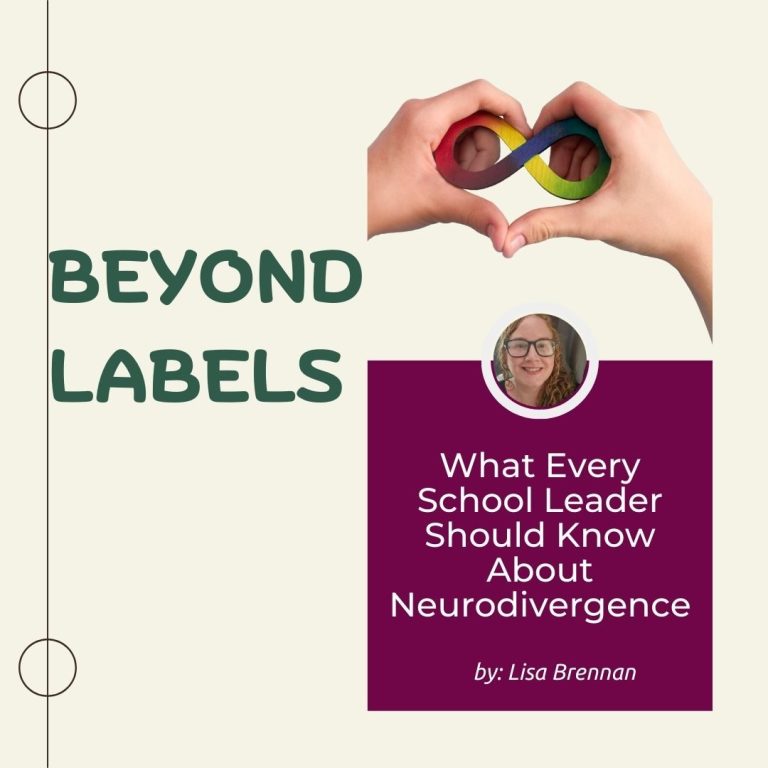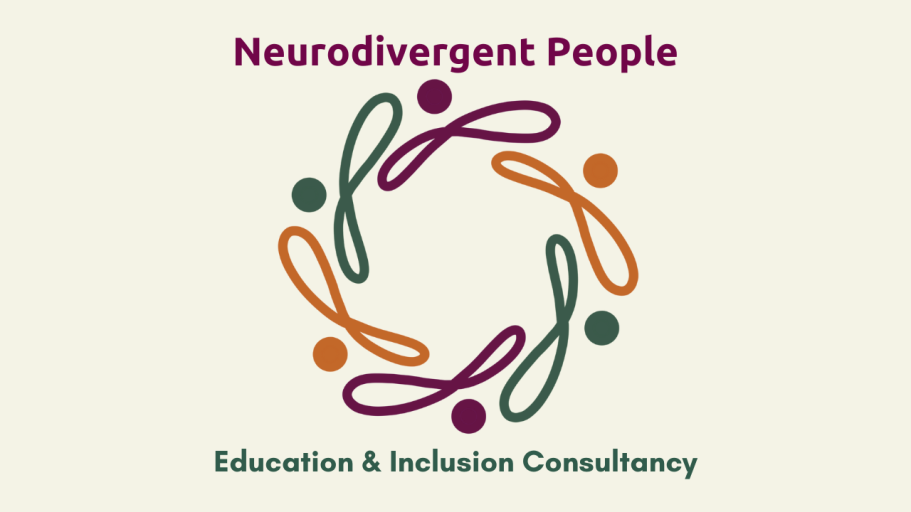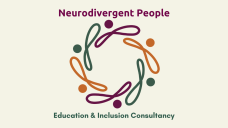Neurodivergent People

Beyond Labels: What Every School Leader Should Know About Neurodivergence
Blog Post 1 - April 2025
Current estimates put the number of neurodivergent people at about 1 in 7, or between 15-20% of the population.[1] That’s about 4 or 5 neurodivergent pupils in each class at any time. As educators, we know how important it is to ensure that we’re meeting the needs of all our learners, but we also know that the current system is not designed to support these children. Being inclusive of our neurodivergent students means going beyond surface level accommodations, and requires us to have a deep understanding of their lived experiences.
What is Neurodivergence?
The reason why estimates for neurodivergence are so high is because it is an umbrella term, covering a wide range of differences and conditions. The term was coined by autistic sociologist Judy Singer[2] in the 90s to describe people whose brains process information differently from most. Although autism has always been a focus of neurodivergent research, many other conditions are also welcomed under the umbrella. These include:
- Autism: Differences in social communication, sensory processing and routine preferences.[3]
- ADHD (Attention Deficit Hyperactivity Disorder): Challenges with executive functioning, attention regulation and impulsivity[4]
- Dyslexia: Difficulties with reading, writing and spelling, often along with strong problem-solving abilities[5]
- Dyspraxia (Developmental Coordination Disorder): Impacts motor skills, organisation, and spatial awareness[6]
- Dysgraphia: Difficulties with spelling, writing, and putting ideas on paper generally[7]
- Dyscalculia: Difficulties understanding, recalling or using numerical information[8]
- Tourette Syndrome: Tics and involuntary uncontrollable sounds and movements, which can increase under stress[9]
- Auditory Processing Disorder: Affects ability to understand auditory information[10]
- Irlen Syndrome: A perceptual processing disorder that affects the brain’s ability to understand visual information[11]
- Hyperlexia: Precocious ability to read, usually self-taught before age 5, and / or intense interest in letters, numbers, or other visual patterns[12]
These are not the only neurodivergent conditions, but you can see from the list that the term neurodivergent encompasses many more conditions and experiences than simply autism and ADHD, which are the most commonly known.
Every student’s experience is unique and these conditions often overlap, so we need to take an individualised approach to support.
How Does Neurodivergence Present in the Classroom?
Again, each pupil will have a different set of challenges and strengths depending on their neurodivergent conditions, profile and personality, so this is definitely not an exhaustive list! However, many neurodivergent students have difficulties in at least one of the following areas:
- Sensory Processing: Bright or flickering lights (fluorescent lights are regular culprits), loud or piercing sounds, textures, tastes or smells can all be overwhelming and distracting. Pupils may display overt anxiety and distress – crying, covering ears – or become very quiet and withdrawn.[13]
- Executive Functioning: Struggles with organisation, time management and task initiation. Learners might regularly lose or forget equipment or belongings, take much longer than expected to complete work, or find it difficult to get started at all. [14]
- Social communication: Verbal expression, non-verbal cues and social reciprocity can all be challenging. Neurodivergent people often communicate differently from their neurotypical peers, and this can cause difficulties. They may be excluded from friendship groups, find it difficult to work with others, or struggle to express their feelings. [15]
- Emotional Regulation: Often more prone to anxiety, frustration, or meltdowns in response to stressful situations. This can manifest as loud outbursts, as the child is too overwhelmed to continue, but can also take the form of quiet ‘shutdowns’ which might be overlooked.[16]
Some Common Myths about Neurodiversity
Myth 1: Neurodivergent students just need to try harder
We all know students who have been labelled as lazy or unmotivated. However, they may well be struggling with executive function difficulties, sensory overload, or exhaustion from constantly trying to fit in and navigate social situations they don’t have the tools for. When we tell them to ‘just focus’, or ‘pay more attention’ we are overlooking their need for support.
Myth 2: If they don’t act out, they don’t need help
Many neurodivergent students, particularly girls, are more likely to internalise their struggles and difficulties, hiding or masking their challenges so they can fit in better. This frequently leads to burnout and mental health problems if their needs are not met. [17]
Myth 3: Accommodations give neurodivergent students an unfair advantage
Providing our students with accommodations like extra processing time, movement breaks or sensory / quiet rooms isn’t about advantage, but about equity. [18] Neurodivergent pupils often face significant barriers to accessing education. When schools recognise and remove those barriers then all our students benefit.
How School Leaders Can Promote True Inclusion
- Redefine Success: Move away from traditional behaviour management approaches and focus on the strengths of individual learners. [19]
- Train School Staff on Neurodivergence: Equip teachers and teaching assistants with knowledge and strategies to create inclusive learning environments.
- Involve Students and Families: Work collaboratively with our neurodivergent pupils and their families to develop tailored support strategies that actually work.
- Create Flexible Learning Environments: Allow for movement, sensory breaks, and alternative ways to demonstrate learning.[20]
Understanding neurodivergence is the first step we can take towards creating an inclusive and supportive educational environment. By challenging the myths that exist around neurodivergence and implementing evidence-based strategies, schools can empower our neurodivergent learners to thrive. [21]
Would you like more resources on creating a neurodivergent-friendly school? Download our Neurodivergence Inclusion Checklist below and sign up for our newsletter and be the first to be notified about our upcoming webinar for school leaders!
[1] Doyle N. ‘Neurodiversity at work: a biopsychosocial model and the impact on working adults’. Br Med Bull. 2020 Oct 14;135(1):108-125.
[2] Singer, Judy. ‘Neurodiversity : The Birth of an Idea’. 2017.
[3] National Autistic Society. ‘What is Autism?’ https://www.autism.org.uk/advice-and-guidance/what-is-autism
[4] CHADD ‘Understanding ADHD’ https://chadd.org/understanding-adhd/
[5] British Dyslexia Association ‘What is Dyslexia?’ https://www.bdadyslexia.org.uk/dyslexia/about-dyslexia/what-is-dyslexia
[6] Dyspraxia UK ‘What is DCD/Dyspraxia?’ https://dyspraxiauk.com/definition-of-dyspraxia
[7] International Dyslexia Association ‘Understanding Dysgraphia’ https://dyslexiaida.org/understanding-dysgraphia/
[8] British Dyslexia Association ‘What is Dyscalculia?’ https://www.bdadyslexia.org.uk/dyscalculia
[9] Tourette Association of America. ‘What is Tourette?’ https://tourette.org/about-tourette/overview/what-is-tourette/
[10] Great Ormond Street Hospital ‘Auditory Processing Disorder’ https://www.gosh.nhs.uk/medical-information-0/auditory-processing-disorder/
[11] Irlen ‘What is Irlen Syndrome?’ https://irlen.com/what-is-irlen-syndrome/#:~:text=Irlen%20Syndrome%20is%20a%20type,problems%20involving%20sight%20or%20vision.
[12] WebMD ‘What is Hyperlexia?’ https://www.webmd.com/children/what-is-hyperlexia
[13] ChildMind Institute ‘How sensory processing issues affect kids in school’ https://childmind.org/article/how-sensory-processing-issues-affect-kids-in-school/
[14] Harvard Health ‘Executive Function in Children’ https://www.health.harvard.edu/blog/executive-function-in-children-why-it-matters-and-how-to-help-2020121621583
[15] National Autistic Society ‘Social Communication Skills in the Classroom’ https://www.autism.org.uk/advice-and-guidance/professional-practice/communication-skills-classroom
[16] MindMate ‘Emotions & ND’ https://mindmate.org.uk/neurodiversity-information-hub/neurodiversity-characteristics/emotions-nd/
[17] The Brain Charity ‘What is Masking?’ https://www.thebraincharity.org.uk/what-is-masking/
[18] The Education Hub ‘Reasonable Adjustments’ https://educationhub.blog.gov.uk/2023/04/what-are-reasonable-adjustments-and-how-do-they-help-disabled-pupils-at-school/
[19] British Psychological Society ‘Neurodiversity Affirmative Education’ https://www.bps.org.uk/psychologist/neurodiversity-affirmative-education-why-and-how
[20] The Universal Design for Learning Guidelines https://udlguidelines.cast.org/static/udlg3-graphicorganizer-digital-nonumbers-a11y.pdf
[21] British Psychological Society ‘What does Neurodiversity Really Imply for Education?’ https://www.bps.org.uk/psychologist/what-does-neurodiversity-really-imply-education
We need your consent to load the translations
We use a third-party service to translate the website content that may collect data about your activity. Please review the details in the privacy policy and accept the service to view the translations.

